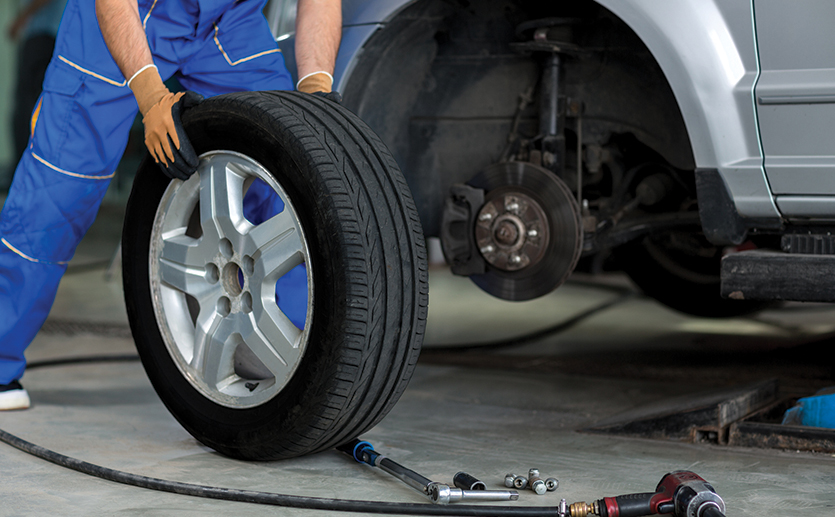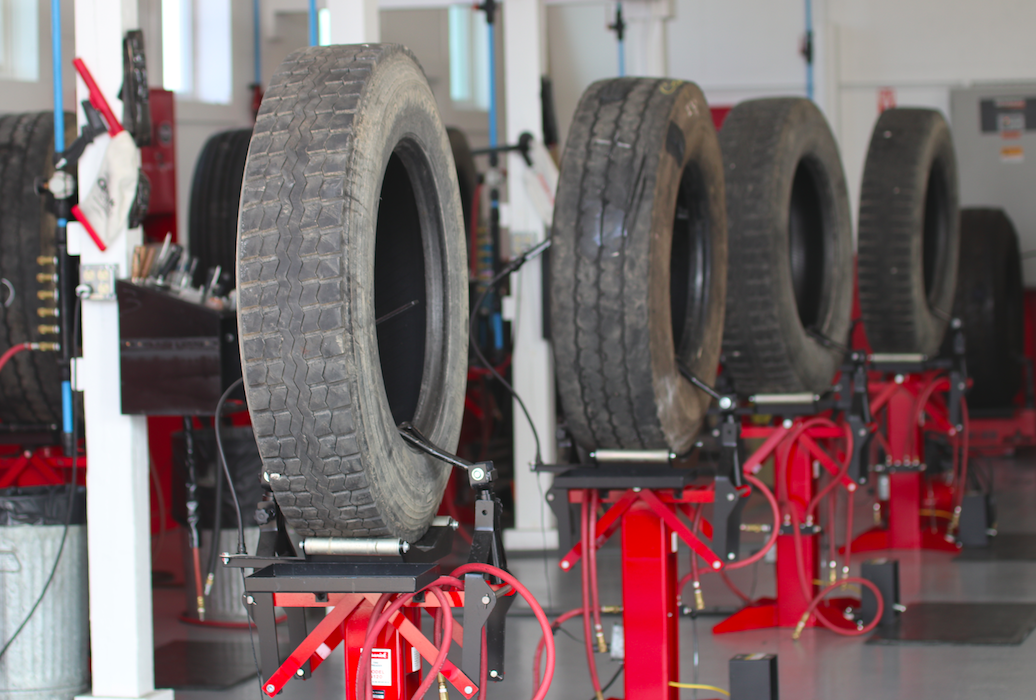Tire Shop Near Me: Find Morris IL's Top Bargains
Tire Shop Near Me: Find Morris IL's Top Bargains
Blog Article
Expert Overview to Tire Repair Work: Whatever You Required to Know
Navigating the globe of tire fixing can be an overwhelming job for numerous car proprietors. From determining the typical root causes of tire damages to understanding the intricate actions associated with repairing a slit, there is a wealth of expertise to understand. In this thorough overview, we will certainly decipher the complexities of tire repair work, clarifying the various sorts of repair service sets offered and offering beneficial understandings into when it might be time to bid goodbye to a worn-out tire. Stay tuned as we delve much deeper into the nuances of tire upkeep, equipping you with the important know-how to ensure your tires stand the test of time.
Common Root Causes Of Tire Damage
What are the common causes that cause tire damages, impacting automobile efficiency and safety? Tire damage can occur because of various aspects, with among the key reasons being improper inflation stress. Under-inflated tires can trigger excessive heat build-up, resulting in raised wear and potential blowouts. Conversely, over-inflated tires can result in decreased traction, unequal wear, and a harsher ride.

Another common source of tire damage is poor walk depth. Damaged treads can jeopardize grip on the road, particularly in damp or slippery conditions, raising the threat of accidents. Furthermore, driving over potholes, debris, or sharp items can pierce or create cuts in the tire, weakening its framework and potentially triggering a flat.
Furthermore, inappropriate wheel placement and unbalanced tires can additionally contribute to tire damages. Misaligned wheels can lead to irregular wear patterns, while out of balance tires can create resonances, affecting both the car's handling and the tire's long life. Regular upkeep checks and punctual repairs can assist mitigate these usual causes of tire damages, guaranteeing optimum lorry performance and security.
Kinds Of Tire Repair Kits
To deal with the results of typical reasons for tire damage talked about earlier, it is important to recognize the different sorts of tire repair service sets available for lorry proprietors. There are mostly three kinds of tire repair work kits typically used: plug sets, spot packages, and combination repair service packages.
Spot kits, on the various other hand, are a lot more suitable for bigger punctures or cuts in the tire. These packages consist of a patch and glue product that is applied to the internal cellular lining of the tire to cover the broken location securely.
Mix fixing packages supply the benefit of containing both plug and spot elements, offering a thorough service for a variety of tire damage situations. It is essential for lorry proprietors to familiarize themselves with these different published here kinds of tire repair packages to be prepared for any unexpected tire issues when driving.

Actions to Fix a Tire Slit
Repairing a tire leak requires a methodical technique and the right tools to ensure a safe and efficient remedy. When faced with a punctured tire, the very first step is to securely draw over to a level, steady surface area away from web traffic. Involve the car park brake and location wheel chocks behind the tires to avoid any unintentional rolling. Next, eliminate the punctured tire adhering to the vehicle supplier's guidelines. As soon as the tire is gotten rid of, check the punctured area to locate the foreign things triggering the leakage. Make use of a reaming device to tidy and roughen the leak hole for better bond. Apply rubber concrete to the location and place a plug using a plug insertion device. Cut any type of excess plug material flush with the tire walk. Reinflate the tire to the recommended stress and reinstall it onto the vehicle. Conduct a detailed leak check using soapy water to guarantee the puncture is successfully secured before resuming typical driving.
When to Change a Tire
Establishing the proper time for tire substitute requires a comprehensive evaluation of different vital elements associated to tire wear and safety and security. As tires wear down, the depth of the walk reductions, impacting the tire's hold on the roadway. Also if the walk depth appears adequate, tires older than 6 years need to be thoroughly taken a look at, as the rubber can degrade over time, making the tire much more susceptible to failure.

Tire Upkeep Tips for Durability
After assessing key elements related to tire wear and safety and security, implementing look at here proper tire upkeep practices is essential for optimizing the longevity of your tires. Consistently examining tire stress is critical, as underinflated tires can lead to boosted wear and minimized fuel effectiveness. It is suggested to examine tire stress at the very least when a month and soon trips. In addition, maintaining appropriate wheel placement and equilibrium can help prolong the life-span of your tires. Misaligned wheels can cause unequal wear, while unbalanced wheels can result in resonances and premature tire wear.
Turning your tires at regular periods, normally every 5,000 to 7,000 miles, promotes even step wear across all tires. Evaluating tires for signs of damage, such as cuts, bulges, or punctures, is also essential for keeping tire longevity. By following these tire maintenance pointers, you can take full advantage of the lifespan of your tires and guarantee a smooth driving experience.
Conclusion
To conclude, recognizing common sources of tire damage, making use of the ideal tire repair packages, complying with correct actions to fix a tire puncture, recognizing when to change a tire, and implementing tire upkeep tips are important for making find this best use of the long life of your tires. By remaining notified and aggressive in addressing tire issues, you can ensure safety on the road and prolong the life expectancy of your tires.
Report this page